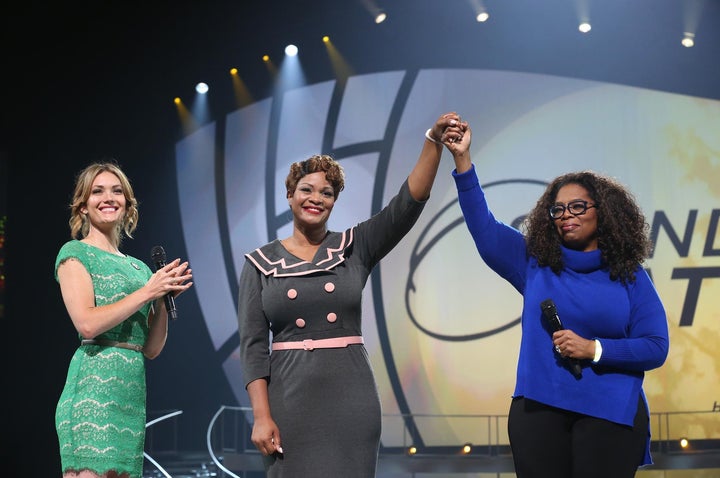
Army Reserve Maj. Jas Boothe receives the Standing O-Vation award from Oprah Winfrey and Toyota in 2014.
Army Reserve Maj. Jas Boothe had orders to Iraq — as well as a young son — when she lost everything she owned to Hurricane Katrina. A few months later, she found herself battling cancer, and cancer treatments meant no deployment, which meant no job, which meant no income.
When she was discharged after treatment at Brooke Army Medical Center in San Antonio, it was to what she describes as an unsympathetic VA system — and also to her aunt’s couch. Boothe was suddenly part of a hidden and often disconnected network of women veterans who are functionally homeless but uncounted — and therefore invisible — to the larger system.
She’s grateful that her aunt took her and her son in, but is careful to point out that “when you’re couch-surfing, you’re at the mercy of others. Sometimes it wears on the people who are helping you out, through no fault of their own,” she adds. “If you can’t get on your feet within what they might consider a reasonable amount of time, you can become a burden to them. And nobody wants to be in that position, where you feel like, you know, that you’re at their mercy.”
“Because (women veterans) don’t fit into that federal definition of homelessness, we will continue to be seen as ‘invisible’,” says Boothe. “I guess (to the federal government), if you have a couch, then you’re OK — even though it’s not your couch.”
If you’ve never heard of couch-surfing before, it could turn out to be pivotal to any in-depth discussion of female veteran homelessness. The federal government does not recognize it as a form of homelessness, and because of that, Washington overlooks a large percentage of women veterans who lack permanent housing and consequently fly beneath the radar of what constitutes veteran homelessness in America.
Previously, we took a look at how the count that attempts to estimate the number of homeless veterans in communities nationwide is both fraught with potential errors and especially likely to miss women veterans, based on the choices they make during periods of unstable housing.
The count is vital to determining budgets for services available to homeless veterans, so being left out of the count can have catastrophic implications for women veterans. To quote sociologist Elliot Liebow, from his seminal study, “Tell Them Who I Am: The Lives of Homeless Women,” “Some people want the numbers to be large, others want them to be small, because public attention and the allocation of money and other resources to aid the homeless depend in large part on the number of homeless persons.”
At its most basic, the federal government establishes the definition of who a homeless veteran is, in language first set out in the McKinney-Vento Act of 1987, and amended over time. The current definition is written by the Department of Housing and Urban Development, and then borrowed by other agencies, such as VA, for enforcement. The language controls who is and is not considered homeless, and there’s a strong possibility the choice of language affects women veterans more than their male counterparts.
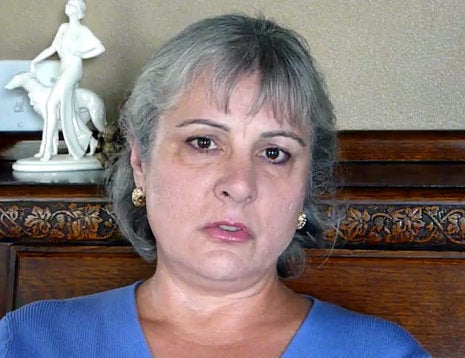
Susan Avila-Smith, Army veteran and military sexual trauma (MST) advocate.
When I first met Susan Avila-Smith years ago in Seattle, she told me about the prevalence of couch-surfing among the many women veterans she worked with who had suffered Military Sexual Trauma (MST). It was a very typical arrangement for these women veterans who were still trying to make peace with their trauma to have difficulty sleeping, holding a job, or, consequently owning or renting a home. Avila-Smith, a former Army linguist who may be the foremost MST advocate in the nation, described anecdotally how many women veterans could be found sleeping on couches, futons, or air mattresses on the floor of an accommodating relative, friend or even sometimes a stranger.
And since the federal definition of homelessness at the time included couch-surfing, also known as “doubling up,” Avila-Smith would encourage these women veterans to present themselves at the U.S. Department of Veterans Affairs (VA) as homeless, to avail themselves of the appropriate services. The way she described it, it sounded like she had a hard time convincing many of them that couch-surfing was homelessness; but the federal government saw it that way and eventually many of the women veterans were persuaded to reframe their situations accordingly.
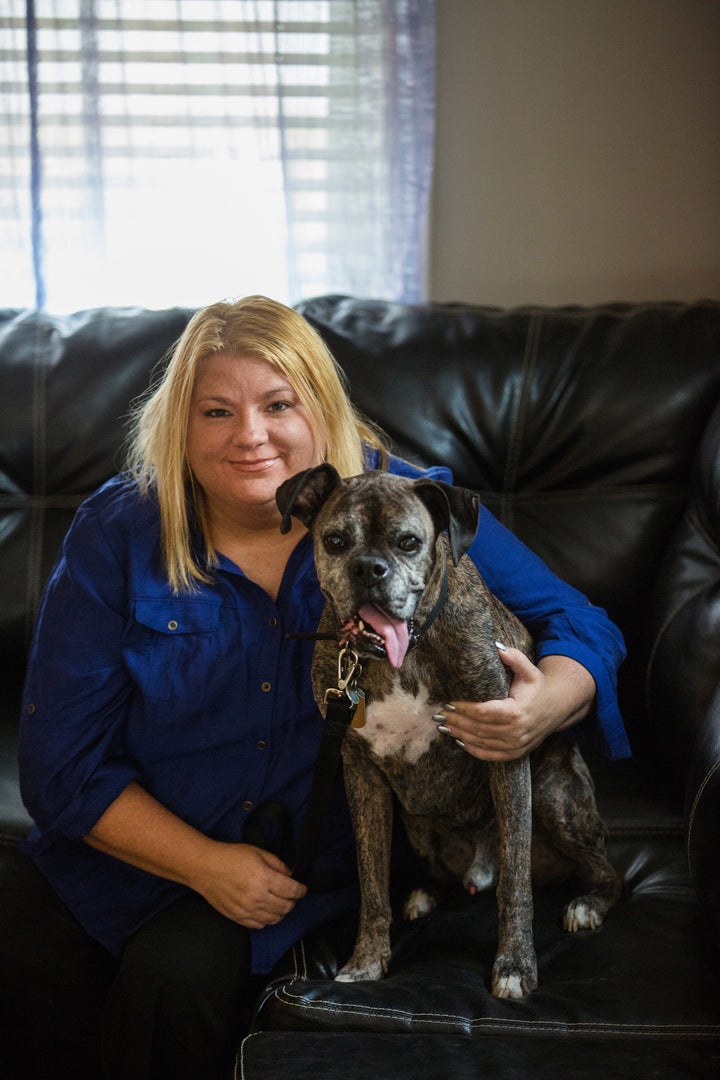
Rosie Palfy, Marine veteran and homeless advocate, with her Boxer, Bubba (RIP), at home in Parma, Ohio. Photo by Scott Shaw.
Then in 2009 the federal definition changed and couch-surfing was, well, bounced. “It’s easy to simply say, ‘this isn’t fair,’” says Rosie Palfy, a Marine veteran from Cleveland, Ohio who spent many years homeless after a sexual assault in the military. “It’s another thing to show that if a veteran was homeless a month or so earlier, she would have been eligible for services.” “When I became in homeless in 2006,” says Palfy, “couch-surfing was considered homeless.”
Women veterans on the rise
There are 2.2 million women veterans in America today, a percentage of whom are homeless. (Women service members represent approximately 15% of active duty and 18% of the Guard and Reserves.) Because estimates vary widely and are so inconclusively derived, it almost doesn’t make sense to share what those statistics are; they have very little chance of being even in the ballpark of accurate.

The projected female veteran population is on the rise, according to the U.S. Department of Veterans Affairs (VA)’s own statistics.
But what we do know is that the numbers of women veterans are strongly on the increase, even as the overall number of male veterans declines — and that there are gender differences to how men and women veterans experience homelessness. We know that there are various types of homelessness, from “chronic” to “functional” to “episodic,” which are not interchangeable. Some get more or less attention and focus at different times, but they all work to describe the various conditions of lacking one’s own home.
We also know that women veterans become homeless at a rate between two and four times that of their civilian counterparts. As we mentioned in the previous article, women veterans are currently the fastest-growing demographic of the homeless veteran population, including women veterans with children.
They are part of a “large, ‘dark’ figure of people experiencing hidden homelessness,” a phenomenon “that affects certain groups, such as women, in particular,” writes Carol McNaughton in Transitions through Homelessness: Lives on the Edge.
Why women?
Experts suggest, from an anthropological perspective, that women are more used to paying into an off-the-books kin network, which allows them to withdraw goodwill, in the form of temporary housing, when they need it. Columbia professor Kim Hopper, Ph.D., writes about it at length in Reckoning with Homelessness, and he describes the goodwill that women bank as something peculiar to women, who are willing to do the work to maintain a kin network, and then judiciously withdraw when times are tough.
The kin network may go far to explain the prevalence of couch-surfing among women veterans, whether distressed MST survivors or women veterans with children. It also puts women veterans squarely outside the count, and away from benefits and services that could help them reintegrate to life after service.
Despite, or maybe because of, the dearth of research into what at least one researcher calls the “complex web of vulnerability” that propels women veterans into homelessness, there is a sense that the gender differences are crucial to explore. As noted researchers Alison Hamilton, Ph.D., Donna Washington, Ph.D. and Jessica Zuchowski, Ph.D. wrote in “Gendered Social Roots of Homelessness among Women Veterans,” in the journal, Annals of Anthropological Practice:
“We contend that there is something unique and specific to women’s experiences at the intersection of gender and the military that makes their homelessness — and their vulnerability to homelessness — different from men’s experiences, and this may contribute to the increase in homelessness among women veterans specifically.”
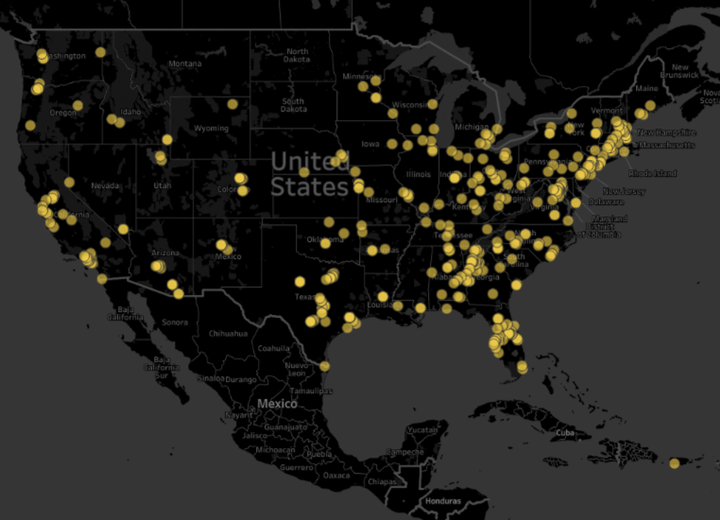
A visual representation of the location of 400 women veteran respondents to a survey on housing instability after military service.
In January, 2015 women veterans participating in social media were directed to a brief, online survey about housing instability after completion of military service.
Since women veterans typically do not self-identify as veterans — for reasons outside the scope of this article — it was important to ask instead if they had served in the U.S. military. In the same way, respondents were asked if they had experienced periods of unstable housing or lack of permanent housing after they left the military, since homelessness itself has pejorative connotations — and, as alluded to Avila-Smith above, many women veterans may have trouble acknowledging that functionally they’re homeless, irrespective of the current codified meaning of that term.
The responses collected were frequently poignant and compelling on an individual basis; then disturbing in the aggregate.
The survey results
The 400 women veteran respondents, ranging in age from 23 to 71, representing every race and ethnicity, every branch of service, service era, and every part of the country mirrored the distribution of women veterans in much larger datasets, including those of VA. The average age of respondents was 46.5.
More than seven in 10 respondents reported experiencing periods of homelessness longer than a month in duration. Only three in 10 reported no problems — and more than a quarter reported having been homeless for a year or longer.
Periods of homelessness of at least a month were prevalent for every age group of women veterans, except for those aged 65 and older. Periods of homelessness for a year or more, though, were experienced by one in five women veterans in every age range from 23 to 65.
In a hypothesis first suggested conversationally by longtime veterans advocate Diana Danis, the founder and former executive director of the National Women Veterans Conference, the most popular accommodation choices among women veterans struggling with unstable housing were, in order, couch-surfing, staying in unsafe relationships (those characterized by domestic violence), and sleeping in cars. Significantly, only one of those choices — the last one — is covered under current definitions of homelessness.
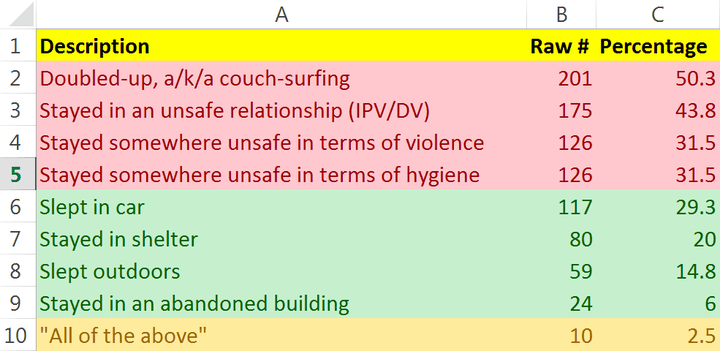
Prevalence of various forms of functional homelessness, as chosen by the survey’s 400 women veteran respondents.
The accommodation choices we might more readily associate with male veterans — willingness to sleep outside, stay in a shelter or even in an abandoned building — were all significantly less popular among women veterans in the survey, and yet these choices are all covered under the current federal definition — adding concern that gender differences in how women veterans experience homelessness contributes to their low representation in the federal count, whose numbers are crucial to budgeting effectively for programs and services that in turn serve women veterans who are homeless.
“Without data,” wrote W. Edwards Deming, in a meme that’s making its way around social media, “you’re just another person with an opinion.” One of the benefits of survey research is its ability to test hypotheses, but also assumptions and presumptions we might not even realize we’re making.
Was one branch or another “safer” for women veterans, when it came to averting homelessness? That’s certainly the case when it comes to other negative outcomes like PTSD, which has been linked to more combat-intensive branches like the Army or Marines.
But in this survey, women veterans across every branch experienced similar results, eliminating any obvious relationship to branch.
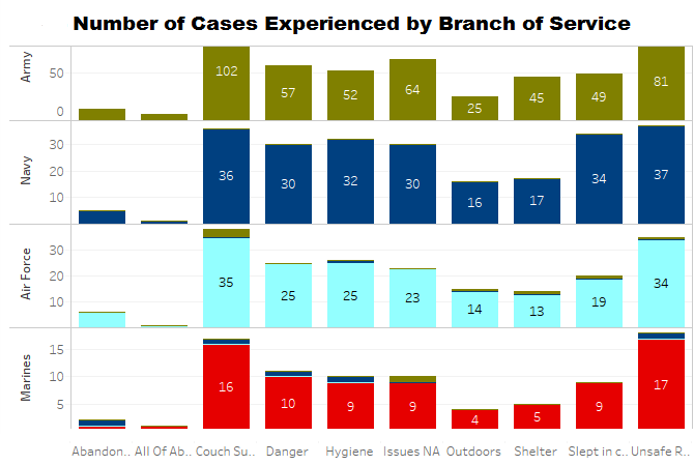
Prevalence of various choices to accommodate housing instability by branch of service, for 400 women veteran survey respondents.
Similarly, would length of service offer what researchers term “a protective effect” against homelessness? Could we expect that women veterans who’d spent multiple years in the service would be hardly touched by this problem at all?
Distressingly, only slightly more than half of the women veterans with 20 or more years of service experienced no problems, whereas almost one in five reported homelessness of more than a year(!). For women veterans with between 10 and 20 years of service, more than four in 10 experienced homelessness between one month and a year, while three in 10 experienced homelessness for a year or more.
The comments
The final question in the short survey asked:
“Is there anything else you’d like to say about housing difficulties you may have encountered after serving in the military?”
Contrary to expectations, almost every survey respondent — 375 of the 400 — used the space provided to say something often quite profound and succinct about their experiences. The sheer volume and the content of the responses was both gratifying and humbling. It was almost as though these women veterans had been waiting to be asked.
When I shared the how heavily this comment space had been used with the National Center for Homelessness and Veterans (VA)’s acting director Thomas O’Toole, M.D., before the other results were analyzed in more depth, he remarked that the comments were the survey’s “gold” — since we rarely hear directly from this population in their own words.
Science writer Paul Brodeur once said that “statistics are just human beings with their tears wiped away.” The comment section, as heavily utilized by women veterans to share their stories, offered a chance to put the tears back in.
You can read the women veterans’ comments by exploring the data visualization embedded below. The map expands when you click on it, and you can enlarge any point on it. As you cursor over the map, you can read what women veterans had to say about periods of housing instability after military service.
Additionally, if you are a woman who served in the U.S. military and you would like to participate in a revised and expanded, IRB-approved survey on military service, housing and disability, please click here. (Not appropriate for those still on active duty.) We’d further appreciate it if you would take the survey and share the survey link, http://bit.ly/hwvsurvey2, with your own network(s) of women veterans, on social media and beyond. Results will be available shortly.
---
NOTE: This article is the second in a three-part series, Coming Out of the Shadows: Women Veterans and Homelessness. The reporting for this series was conducted under a Howard G. Buffett inaugural grant from the International Women’s Media Foundation. Additionally, the results of the original survey, conducted in 2015, were were analyzed historically with Institutional Review Board (IRB) approval from the University of Texas.
Additional articles in the series are located here: “GI Jane Needs a Place to Sleep,” (Bonus material: “Camaraderie Offsets Trauma for Women Veterans” about military sexual trauma, and rapport with fellow women veterans), and “The Path Home for Women Veterans,” the conclusion to the series. There are also two additional stories that capture further aspects of the topic: “Homeless Women Veterans Struggle to Be Seen” and “Down for the Count: Women Veterans Likely Underestimated in Federal Homelessness Figures.”
There is also an interactive timeline of how we got to this point, and a radio show/podcast including Lily Casura, BriGette McCoy and Rosie Palfy talking about female veteran homelessness.
As mentioned above, there’s also a data visualization showing the comments of 400 women veterans describing their experiences of unstable housing after military service, and if you’re a woman and a U.S. military veteran, no longer on active duty, there’s a link to a short, 5-minute, IRB-approved survey to take — while it stays open — about housing issues after military service.
